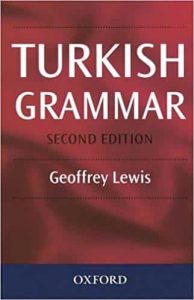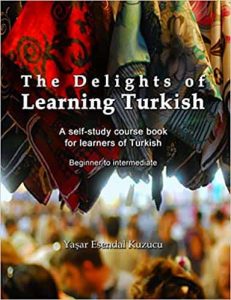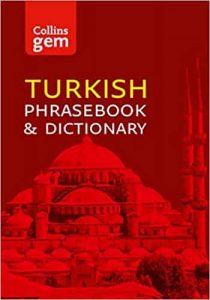You can find free Turkish grammar lessons on this page—from the alphabet to advanced participles. We all know that learning grammar in isolation can feel tedious. Recent language-learning trends dismiss grammar entirely, promising fluency through pictures and repetition alone. They fail. Adults have analytical minds that thrive on understanding patterns, and Turkish grammar rewards that approach. Once you grasp the underlying logic of cases, suffixes, and vowel harmony, everything clicks into place.
8 Essential Turkish Grammar Rules You Need to Know
Turkish is an agglutinative language with remarkably consistent patterns. These foundational rules explain why Turkish works the way it does—and why it’s more logical than it first appears.
- Turkish has no grammatical gender: Unlike French, German, or Spanish, Turkish doesn’t assign masculine or feminine gender to nouns. The word for “table” isn’t inherently male or female—it’s just a table. Even better: the single pronoun o means “he,” “she,” and “it.” This eliminates an entire category of memorization that plagues learners of European languages.
- Turkish uses 6 grammatical cases: Rather than prepositions scattered throughout sentences, Turkish cases attach directly to nouns as suffixes. The six cases are: nominative (basic form), accusative (direct object), dative (to/toward), locative (at/in), ablative (from), and genitive (possessive). Example: ev (house), eve (to the house), evde (in the house), evden (from the house).
- Vowel harmony governs suffix formation: Vowel harmony is the single most important rule in Turkish. Suffixes change their vowels to match the root word’s vowel type. Front vowels (e, i, ö, ü) pair with front-vowel suffixes; back vowels (a, ı, o, u) pair with back-vowel suffixes. This creates melodious, easy-to-pronounce words. Master this rule early—it affects every suffix you’ll ever use.
- Turkish uses SOV word order: Subject-Object-Verb structure means verbs always come last. Ben kitap okuyorum = “I book read” (I am reading a book). English speakers find this backwards initially, but it’s the majority pattern worldwide—used by Japanese, Korean, Persian, and many others. Once internalized, it feels natural.
- Suffixes stack to build meaning: Turkish is agglutinative—suffixes attach to words in a specific order to create complex meanings. A single Turkish word can express what English needs a full phrase for. Example: evlerimizden = ev (house) + ler (plural) + imiz (our) + den (from) = “from our houses.” The order matters: plural → possessive → case → tense markers.
- No articles (“a” or “the”): Turkish doesn’t use articles as separate words. Context and word order determine whether something is definite or indefinite. When definiteness must be marked explicitly, the accusative case suffix handles it. Example: Kitap okudum = “I read a book” vs. Kitabı okudum = “I read the book.”
- The alphabet is (mostly) phonetic: The Turkish alphabet has 29 letters, each representing one sound. What you see is what you pronounce—a luxury compared to English’s chaotic spelling. Six letters don’t exist in English (ç, ğ, ı, ö, ş, ü), but once learned, you can pronounce any Turkish word correctly just by reading it.
- Verbs conjugate with suffixes, not helping verbs: Turkish doesn’t use auxiliary verbs like “do,” “have,” or “will.” Everything—tense, negation, question, person—attaches as suffixes to the verb stem. Example: gel-iyor-mu-sun? = gel (come) + iyor (present continuous) + mu (question marker) + sun (you) = “Are you coming?” This makes Turkish verbs dense with information but refreshingly systematic.
These eight rules form the skeleton of Turkish grammar. No gender to memorize. No irregular articles. Pronunciation that matches spelling. Once you internalize vowel harmony and the suffix system, Turkish reveals itself as one of the world’s most elegant and logical languages.
Below, you’ll find comprehensive lessons organized by difficulty level. Each lesson includes clear explanations, examples from real Turkish, and exercises to test your understanding. Start with beginner lessons if you’re new to Turkish, or jump to your current level.
Free Turkish Grammar Lessons: A1 to C2
Our grammar curriculum covers beginner through advanced levels, following the CEFR framework (Common European Framework of Reference). Each level builds on the previous one, introducing progressively complex structures—from basic cases and simple tenses to participles, conditionals, and literary constructions.
Turkish Grammar for Beginners (A1-A2)
Turkish grammar starts here. You’ll learn the 29-letter alphabet, master vowel harmony (the rule that makes Turkish sound musical), and discover how suffixes build meaning. Turkish is refreshingly logical: no grammatical gender, consistent pronunciation, and regular patterns. These lessons cover basic cases, simple tenses, and sentence structure—everything needed to construct correct Turkish sentences and understand the language’s elegant efficiency.
After completion: You’ll read basic Turkish, form grammatically correct sentences, and grasp the suffix system that powers the entire language. Plan 2-3 months with daily 30-minute practice.
The Turkish Alphabet
Learn the 29 letters of Turkish alphabet with correct pronunciation, special characters, and how they differ from English.
Learn Turkish Alphabet→ BeginnerTurkish Vowels
Understand the eight Turkish vowels, their classifications, and proper pronunciation for clear communication.
Learn Turkish Vowels→ BeginnerVowel Harmony
Master the fundamental rule that governs Turkish pronunciation and suffix formation through vowel compatibility.
Learn Vowel Harmony→ BeginnerConsonant Alternation
Discover how consonants change and mutate in Turkish words to maintain phonetic harmony and smooth pronunciation.
Learn Consonant Alternation→ BeginnerVar and Yok
Express existence and non-existence in Turkish using these two essential words for possession and availability.
Learn Var and Yok→ BeginnerTo Be (Verb)
Discover how Turkish expresses existence and states of being through suffixes rather than separate verbs.
Learn To Be→ BeginnerGrammatical Cases
Understand the Turkish case system and how suffixes change the meaning and function of nouns in sentences.
Learn Grammatical Cases→ BeginnerDative Case
Express direction, purpose, and indirect objects using the dative case suffix -e/-a in Turkish.
Learn Dative Case→ BeginnerAblative Case
Show origin, source, separation, and comparison using the ablative case suffix -den/-dan in Turkish.
Learn Ablative Case→ BeginnerTurkish Word Order
Learn the SOV structure and flexible word order patterns that make Turkish sentence construction unique.
Learn Word Order→ BeginnerPossessive Determiners
Master how to express possession and ownership in Turkish using possessive suffixes and determiners.
Learn Possessive Determiners→ BeginnerLoanwords in Turkish
Explore borrowed words from Arabic, Persian, French, and English that enrich the Turkish vocabulary.
Learn Loanwords→Turkish Grammar for Intermediate Learners (B1-B2)
Now it gets interesting. You’ll master all Turkish tenses—including the aorist and reported past, structures English can’t quite replicate. These lessons cover complex suffixes, participles, conditionals, and advanced cases. Turkish reveals its precision here: grammatical tools that let speakers express nuance with remarkable efficiency.
After completion: Reading Turkish articles, understanding native speech patterns, and writing complex sentences that actual Turkish speakers would write. Expect 6-8 months of consistent practice, including a breakthrough around month four.
Present Continuous Tense
Express ongoing actions and current situations using the present continuous tense formation in Turkish.
Learn Present Continuous→ IntermediateInstrumental Case
Show means or accompaniment using the instrumental case suffix -le/-la in Turkish sentences.
Learn Instrumental Case→ IntermediateTurkish Abilities
Learn to express ability, capability, and possibility using the -ebil/-abil suffix construction in Turkish.
Learn Abilities→ IntermediateGenitive Case
Show possession and relationships between nouns using the genitive case suffix -in/-ın/-un/-ün.
Learn Genitive Case→ IntermediateComparatives & Superlatives
Make comparisons and express extremes using Turkish comparative and superlative constructions effectively.
Learn Comparatives→ IntermediateTurkish Past Tenses
Master the simple past tense to talk about completed actions and events that happened in the past.
Learn Past Tenses→ IntermediateConjunctions
Connect ideas and create complex sentences using various Turkish conjunctions and linking words.
Learn Conjunctions→ IntermediateAccusative Case
Mark definite direct objects in sentences using the accusative case suffix -i/-ı/-u/-ü.
Learn Accusative Case→ IntermediateFuture Tense
Talk about future plans, predictions, and intentions using the Turkish future tense formation.
Learn Future Tense→ IntermediateTurkish Adverbs
Enhance your descriptions with Turkish adverbs of time, place, manner, and degree to add depth to sentences.
Learn Adverbs→ IntermediateTurkish Prepositions
Learn how Turkish expresses spatial and temporal relationships through postpositions and case suffixes.
Learn Prepositions→ IntermediateAorist Tense
Express habitual actions, general truths, and abilities using the versatile aorist tense in Turkish.
Learn Aorist Tense→ IntermediateUsed To (Past Habits)
Talk about past habits and repeated actions that no longer occur using Turkish past habit constructions.
Learn Used To→ IntermediateTime Clauses
Form temporal relationships between actions using when, before, after, and while constructions in Turkish.
Learn Time Clauses→ IntermediateReported Past Tense (-miş)
Express hearsay, inference, and reported information using the evidential past tense construction.
Learn Reported Past→ IntermediateTurkish Conditionals
Form hypothetical situations and conditions using real and unreal conditional clause structures in Turkish.
Learn Conditionals→Advanced Turkish Grammar (C1-C2)
Advanced Turkish grammar is about refinement. You’ll explore the seven ways Turkish expresses past events, master causative and passive constructions, and learn the subtle choices between grammatically correct alternatives. This level includes verb moods, complex participles, formal vs. colloquial registers, and even Ottoman Turkish elements that persist in academic writing.
After completion: Near-native grammatical competence, the ability to read literature, and instinctive command of subtle grammatical distinctions. Plan 8-12 months—this level you inhabit rather than complete.
Note: These lessons provide a strong foundation, but advanced mastery often benefits from personalized guidance. For one-on-one tutoring and a complete curriculum, schedule a 15-minute consultation with our learning coordinator.
Past Continuous Tense
Express ongoing past actions and background events using the past continuous tense construction in Turkish.
Learn Past Continuous→ AdvancedFuture in the Past
Talk about future actions as viewed from a past perspective using this advanced tense construction.
Learn Future in the Past→ AdvancedParticiples
Transform verbs into adjectives and nouns using participle forms to create complex descriptive phrases.
Learn Participles→ AdvancedTurkish Verb Moods
Master the different verb moods including indicative, imperative, conditional, and subjunctive in Turkish.
Learn Verb Moods→Essential Turkish Suffixes: Quick Reference
Turkish suffixes are the building blocks of the language. Understanding how to attach them—and which vowel or consonant to use—separates hesitant speakers from fluent ones. Vowel harmony and consonant mutation determine suffix forms automatically once you internalize the patterns.
Below are the 15 most common suffixes in Turkish grammar. These appear in virtually every sentence you’ll read or speak. Master these first, then expand to the dozens of others Turkish employs.
Case Suffixes
- -DA Locative case (at/in/on): evde (at home), okulda (at school)
- -A Dative case (to/toward): eve (to the house), okula (to school)
- -DAn Ablative case (from): evden (from home), okuldan (from school)
- -In Genitive case (possessive): evin (of the house), okulun (of the school)
- -(y)I Accusative case (definite object): evi (the house), okulu (the school)
- -l(A) Instrumental case (with/by means of): kalemle (with a pen)
Tense Suffixes
- -(I)yor Present continuous: geliyorum (I am coming)
- -DI Past tense: geldim (I came)
- -AcAk Future tense: geleceğim (I will come)
- -Ar/-Ir Aorist tense: gelirim (I come/will come)
- -mIş Reported past: gelmiş (he/she apparently came)
Other Common Suffixes
- -lAr Plural: evler (houses), okullar (schools)
- -lI “With” or “having”: şekerli (with sugar), sütsüz (without milk)
- -Abil Ability: gelebilirim (I can come)
- -Ar/-Ir + DI Past habit (used to): gelirdim (I used to come)
Note on capitalization: Capital letters in suffixes (-DA, -AcAk, -lAr) indicate vowel harmony variants. For example, -DA can appear as -da, -de, -ta, or -te depending on the word it attaches to. This notation is standard in Turkish linguistics.
Frequently Asked Questions About Turkish Grammar
The U.S. Foreign Service Institute classifies Turkish as a Category IV language, estimating 1,100 hours of study to reach professional proficiency. This places it in the “hard languages” category alongside Arabic, Chinese, and Japanese. However, this classification doesn’t tell the whole story.
Turkish grammar is actually more logical than many Category I languages (like French or Spanish). Unlike European languages, Turkish has no grammatical gender, consistent pronunciation rules, and highly regular grammar patterns. The main challenge for English speakers is the agglutinative structure, where suffixes stack onto words to create complex meanings.
The difficulty depends largely on your native language. Speakers of Japanese, Korean, Finnish, or other agglutinative languages find Turkish grammar familiar. For English speakers, expect 3-6 months to grasp basic grammar (A1-A2), 6-12 months for intermediate proficiency (B1-B2), and 1-2 years of consistent study for advanced fluency (C1-C2).
The key advantage: Turkish grammar is remarkably consistent with few exceptions, making it more predictable than English or French once you understand the core patterns. Vowel harmony and the suffix system initially feel foreign, but most learners report a “click” moment around month 4-6 when everything suddenly makes sense.
Turkish uses six grammatical cases. Each case suffix follows vowel harmony rules and attaches directly to nouns to show their grammatical function. See our complete guide to Turkish cases for detailed explanations and examples.
Vowel harmony is the single most important rule in Turkish grammar. Suffixes change their vowels to match the root word’s vowel type. Turkish vowels divide into two groups: back vowels (a, ı, o, u) and front vowels (e, i, ö, ü).
When adding a suffix, you must choose the vowel that harmonizes with the last vowel in the word. For example: “ev” (house) + plural = “evler” (front vowel), while “at” (horse) + plural = “atlar” (back vowel).
There are two types: two-way harmony (e/a) for some suffixes and four-way harmony (i/ı/u/ü) for others. This makes Turkish sound melodious and maintains pronunciation consistency. While it seems complex initially, learners develop an intuitive feel for vowel harmony within a few months of practice.
Turkish has five main tenses: present continuous (-(i)yor), simple past (-di), future (-acak/-ecek), aorist (-ar/-ir), and reported past (-miş). Additionally, compound tenses include past continuous, future in the past, past perfect, and past habit (“used to”).
The complexity isn’t in the number but in understanding when to use each. The aorist expresses both habitual action and gentle future—a concept English handles awkwardly. The reported past (-miş) indicates you didn’t witness the action yourself, a grammatical distinction English lacks entirely.
Turkish also has multiple moods: conditional (-sa/-se), necessitative (-malı/-meli), and optative (-a/-e) forms. Each serves a specific communicative function that English conveys through separate words or context.
Turkish uses Subject-Object-Verb (SOV) word order. The verb always comes last. Example: Ben kitap okuyorum = “I book read” (I am reading a book). This structure is shared by Japanese, Korean, Persian, and many other languages—it’s actually the second-most common word order globally.
Turkish word order is flexible for emphasis. You can move elements to the beginning for stress, but the verb typically stays at the end. Adjectives precede nouns (like English), and adverbs usually precede verbs. Understanding SOV structure is essential because it affects how suffixes build meaning across the sentence.
No. Turkish has no grammatical gender—one of its greatest advantages over European languages. Nouns aren’t masculine or feminine. The single pronoun o means “he,” “she,” and “it.” This eliminates an entire category of memorization that plagues learners of French, German, Spanish, and similar languages.
You never need to remember whether “table” is masculine or feminine, or match adjective endings to noun gender. Turkish treats all nouns identically, which significantly reduces the cognitive load of grammar acquisition.
Turkish doesn’t use articles (“a,” “an,” “the”) as separate words. Context and word order determine definiteness. When definiteness must be marked explicitly, the accusative case suffix handles it.
Example: Kitap okudum = “I read a book” (indefinite). Kitabı okudum = “I read the book” (definite, marked by accusative -ı). The number “bir” can function like “a/an” when needed: Bir kitap okudum = “I read a book.”
Learning timelines vary by intensity and goals. For basic conversational ability (A2), expect 3-6 months with daily 30-minute practice. Intermediate proficiency (B1-B2) requires 6-12 months of consistent study. Advanced fluency (C1-C2) takes 1-2 years or approximately 1,100 study hours total (per FSI estimates).
These timelines assume structured study combining grammar, vocabulary, listening, and speaking practice. Immersion accelerates learning significantly—living in Turkey can reduce timelines by 30-50%. Your native language also matters: speakers of agglutinative languages progress faster than Indo-European language speakers.
The encouraging reality: Turkish grammar “clicks” around month 4-6 for most learners, when patterns become intuitive rather than consciously applied. After this breakthrough, progress accelerates noticeably.
Recommended Turkish Grammar Books
These carefully selected resources complement our free online lessons. Each serves a different purpose—from comprehensive reference works to practical exercise books.

Turkish Grammar
The authoritative reference work for Turkish grammar. Lewis investigates every aspect of Turkish linguistic structure with academic rigor. Challenging for beginners but indispensable for serious learners aiming for advanced proficiency.
View on Amazon →
The Delights of Learning Turkish
A self-study course introducing Turkish grammar through examples, dialogues, and exercises. Takes learners from beginner to intermediate level with a balanced approach. Includes glossary section.
View on Amazon →
Elementary Turkish
Written by a Princeton professor and revised for modern Turkish. Builds foundational understanding through systematic presentation of grammatical concepts. Appropriate for academic courses or disciplined self-study.
View on Amazon →
Turkish Phrasebook & Dictionary
Practical reference for travelers. Contains 3,000 essential words and phrases, cultural tips, and survival Turkish for common situations. Complements grammar study with real-world usage examples.
View on Amazon →Turkish Stories for Grammar Practice
Reading authentic Turkish literature reinforces grammar patterns in context. These stories expose you to complex structures—participles, advanced tenses, and elegant suffix combinations—that textbooks rarely demonstrate.

Turkish Short Story Book
For Intermediate to Advanced Learners
Nine captivating short stories by celebrated Turkish authors including Ömer Seyfettin, Sabahattin Ali, and Halit Ziya Uşaklıgil. Written in accessible Turkish with vocabulary assistance at the bottom of each page.
Reading literature bridges the gap between grammar exercises and real Turkish prose. You’ll encounter the aorist in its natural habitat, see how native writers stack suffixes for effect, and absorb advanced grammatical structures unconsciously while following compelling narratives.
Learn More →Turkish Culture & Context
Understanding Turkish culture deepens your connection to the language. Cultural context makes grammar choices more meaningful—why certain formality levels matter, how politeness shapes verb conjugations, what metaphors Turkish speakers use naturally.

Inside Out in Istanbul
Lisa Morrow
Move beyond Istanbul’s tourist façades into suburban Turkish life. Morrow captures the everyday extraordinary of Turkish neighborhoods—the conversations, rituals, and social dynamics that textbooks can’t convey.
While not a language resource, this book provides the cultural framework that makes learning Turkish more than memorizing patterns. You’ll understand why certain grammatical constructions carry social weight, how Turkish speakers navigate formality, and what daily life actually sounds like.